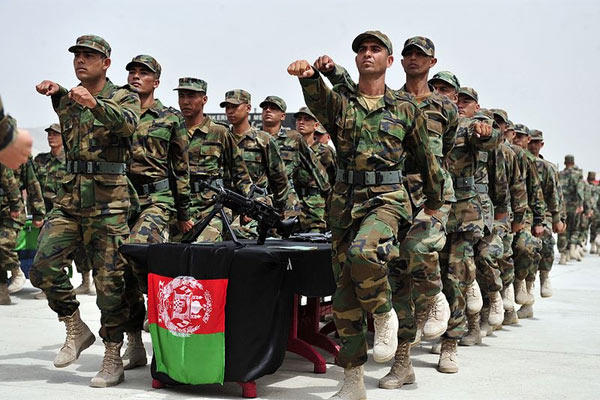The casualty rate has soared again this year for the Afghan National Defense and Security Forces, which have also been hit by a wave of Afghan-on-Afghan "insider attacks," according to an inspector general's quarterly report to Congress.
The state of the Afghan forces after 15 years of training and more than $70 billion in support from the U.S. was highlighted in the report, which also singled out the "existential threat" of corruption in a nation facing rising rates of poverty, unemployment and outmigration.
In addition, "Fifteen years after the United States ousted the Taliban regime, Afghanistan remains one of the worst places in the world to be a woman," said the report released Sunday by John Sopko, the Special Inspector General for Afghan Reconstruction (SIGAR).
From January 1 through August 19 of this year, 5,523 Afghan service members were killed and an additional 9,665 members were wounded, the report said, citing U.S. Forces-Afghanistan. For the same period in 2015, about 4,300 Afghan security personnel were killed and 8,000 were wounded.
Afghan-on-Afghan insider attacks have also slammed the ranks this year. From January through Aug. 19, there were 101 insider attacks in which Afghan security personnel turned on fellow security forces, killing 257 and wounding 125, the report said, citing the NATO Resolute Support mission.
Previous reports on insider attacks have focused on what the U.S. military calls "green on blue" incidents, in which Afghan security members or individuals wearing Afghan uniforms have attacked U.S. and coalition troops.
In the latest green-on-blue attack earlier this month, a suspected Afghan soldier shot and killed Army Sgt. Douglas J. Riney, 26, of Fairview, Illinois, and American contractor Michael G. Sauro, 40, of McAlester, Oklahoma, who were on a mission to conduct an inventory of an ammunition depot on the outskirts of Kabul.
Riney entered active-duty service in July 2012 as a petroleum supply specialist, the U.S. military said. He had been assigned to Support Squadron, 3rd Cavalry Regiment, 1st Cavalry Division, at Fort Hood, Texas, since December 2012.
More than 150 U.S. and coalition troops have been killed and more than 180 have been wounded in insider attacks in the Afghan war, according to The Long War Journal. The insider attacks peaked in 2012 when 44 attacks killed 61 U.S. and coalition troops.
Losing Territory
The Afghan security forces, hit hard by casualties and desertions, also have been losing territory to the Taliban, the report said.
Citing U.S. Forces-Afghanistan, the SIGAR report said that about 63.4 percent of the country's districts are under Afghan government control or influence as of August 28, 2016, a decrease from the 65.6 percent reported as of May 28, 2016. Of Afghanistan's 407 districts, 258 were under government control (88 districts) or influence (170), 33 districts were under insurgent control (8) or influence (25), and 116 districts were "contested."
The contested provinces include southwestern Helmand, center of Afghanistan's flourishing poppy trade, where Afghanistan's 215th Corps has been struggling to keep the Taliban from overrunning the district capital of Lashkar Gah. The 215th Corps has had three commanders in less than a year. The first two were sacked, either because of corruption or poor leadership.
Overall, the inspector general's report painted a grim picture of Afghanistan's challenges, which likely will require a U.S. military presence and economic support indefinitely. One of the most difficult challenges is the culture of corruption that pervades the state, the report stated.
"The less-dramatic and slower-acting, but still existential, threat is the corroding effect of corruption, which diverts money from vital purposes, undermines security and public services, saps the economy, erodes public trust and support, and in varied ways nourishes the insurgency," it said.
In a separate report on Afghanistan road construction released over the weekend, the inspector general said that the U.S. has spent nearly three billion to construct and maintain Afghanistan's road infrastructure since 2001.
However, the Afghan Ministry of Public Works reported that 20 percent of the roads were destroyed and the remaining 80 percent continue to deteriorate. SIGAR inspections of 20 road segments found that 19 segments had road damage ranging from deep surface cracks to roads and bridges destroyed by weather or insurgents, the report stated.
-- Richard Sisk can be reached at Richard.Sisk@Military.com.






























